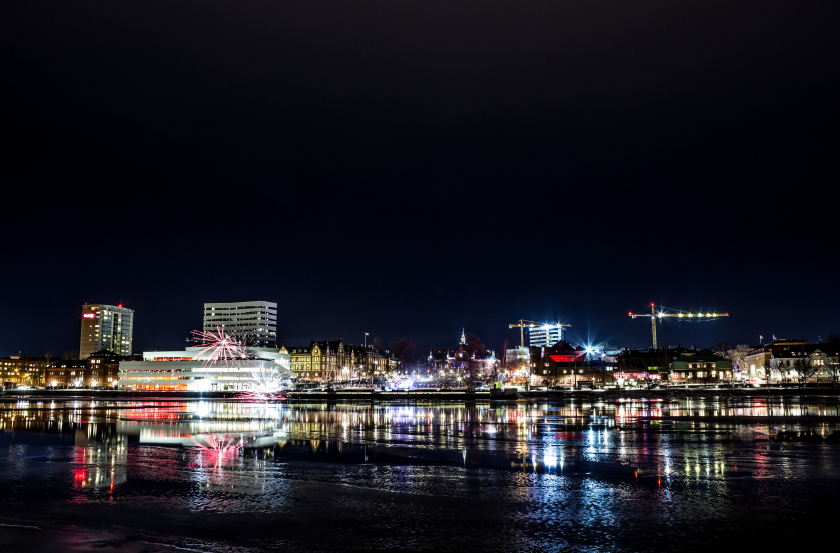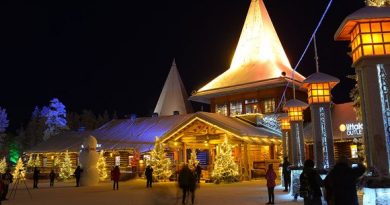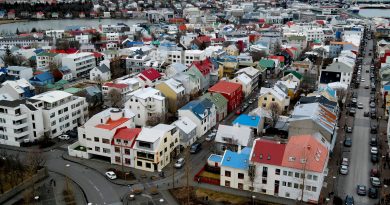How will global warming affect the average Swede?

Researchers have begun to describe what a warmer, wetter Sweden will look like and how people will need to adapt.
But they also warn of catastrophic problems if humans do not cut greenhouse gas emissions. More Swedes are developing an environmental outlook, but their lifestyles nevertheless make them some of the highest greenhouse gas emitters in the world. Looking forward to the United Nations climate summit in Paris this December, we ask how the Swedish public perceives the problem, how they contribute, and what climate-smart choices are available.
Lesser-known causes and effects
Many Swedes have some understanding that weather patterns will change and that their cars and houses account for some greenhouse gases. But in this first of four programs we ask an expert what the lesser-known causes and effects of greenhouse gases are.
“Looking at what people don’t know very much is the difference between the direct effects and the indirect effects,” said Adis Dzebo, a researcher at the Stockholm Environment Institute.
Effect on Swedish cities
Researchers say the average temperature will likely rise between six and eight degrees Celsius, higher than the predicted two to four global average because Sweden is so close to the pole. Sweden has 26,000 kilometers of coastline, and rising seas are one of the key risks of climate change. Many cities are built right on the water, and the rising seas will especially affect southern Sweden in the coming decades.
There will be more rainy days, longer heat waves, more big storms, and higher seas. In the longer run, Sweden’s new weather could even be a boon for agriculture.
Invasive species and germs
But the local climate is only part of the story. Higher temperatures and wetter weather will mean new animals and new germs. For example, Sweden might see some cases of malaria. Sand flies that live in Germany and that carry a skin disease could move north. There has been speculation that the westward migration of ticks carrying encephalitis is partly due to the warmer weather. The raccoon dog, which sometimes carries rabies, is likely to move over from Finland with easier winters.
Green energy and consumer spending
The country’s territorial emissions are low for a modern, Western nation. Wind turbines, hydroelectric dams, and nuclear reactors give Sweden its energy. Swedes use district heating, rarely oil, to heat their houses because of an expensive carbon tax.
“Looking at how Swedes consume, how they fly, how they consume global products, then there is a different story. If you look at per capita consumption, Swedes are among the highest emitters in the world,” said Dzebo.
The Swedish Environmental Protection Agency estimates that the emissions in other countries that are caused by Swedish purchases increased by 50 percent from 1993 to 2012.
But where there is a will there is a way. A recent survey by the World Wide Fund for Nature found that nine out of ten Swedes believe in the manmade causes of global warming. Seven of ten would fly less, and eight of ten would drastically reduce consumption in an effort to curb CO2 emissions. One of three even reported they felt anxious about the climate.
In the second program of the series we consider how a drastic carbon-cut would affect the Swedish economy and ask what choices are currently available to your average Swede who would make climate-smart purchases.
Related stories from around the North:
Canada: Report spotlights rapid glacier melt in Canada and Alaska, Radio Canada International
Europe: Polar ice set for six-metre sea level rise?, Deutsche Welle’s Ice-Blog
Finland: Climate change brings new insect arrivals to Finland, Yle News
Greenland: Field notes from Greenland – From the glacier to the sea, Blog by Mia Bennett
Norway: UN Secretary-General to visit Norwegian Arctic, Eye on the Arctic
Russia: Arctic methane: time bomb or “boogeyman”?, Analysis from Deutsche Welle’s Iceblogger
Sweden: Swedish waters rising faster than global average, Radio Sweden
United States: Snow cover nears record low across North, Deutsche Welle’s Ice-Blog



